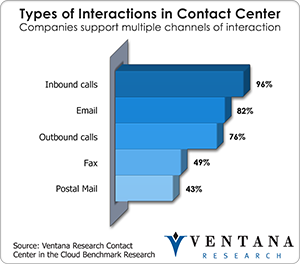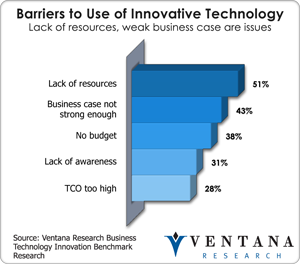Organizations have been talking about how to effectively analyze customer data for more than three decades. This has evolved into a desire for a “360-degree view of the customer” - a comprehensive picture drawn from all available data. As yet, not many organizations have achieved it. Our recent research into customer relationship maturity shows that fewer than one-third (31%) of organizations produce a single set of reports and analysis that the whole organization uses to support customer-related activities. Even those that do produce such a set of reports and analysis lack some critical information, such as customer interactions and social media comments.
Businesses collect, track and analyze customer-related data from wider and deeper sets of data sources than ever before. While structured data remains the most common form, organizations are also learning to exploit semi-structured data (for example, text) as well as more complex data (for example, voice and image files). Seeking business advantage, they use analytics across the business to assess customer value, marketing and sales success, customer experience, interaction-handing processes, contact center performance and compliance. Applying analytics to customer data can deliver significant value when used to deepen insight, support better decision-making and provide alerts when situations require attention from managers or executives.
The biggest obstacle to acquiring the 360-degree view is the increasing volume and variety of forms of customer data. A sometimes bewildering number of data sources contribute to the typical enterprise’s customer data stores, among them CRM and ERP transactions, telephone call recordings, text messages, social media posts, scripts from web chat and instant messages, and recorded video calls. These internal data sources are now more often than not supplemented with data collected from external sources such as third-party suppliers and social media. These often are in complex, largely unstructured forms of data such as speech, ad-hoc text, graphic images, video, alerts and other system events. Combined, the volumes are such that customer data is probably the largest form of big data.
Modern customer data can range from transaction data such as name, address, date and sales value, to emotional indicators of a customer’s state of mind and satisfaction level, to predictive information such as the intent to stop doing business with the company or willingness to recommend it to others. Organizations need to access all this data and understand it in a timely manner so business units can use to it to inform their activities. The same information can help to plan a marketing campaign, close a sale, answer a complaint, modify a product, produce a customer journey map, identify customer preferred channels of interaction, or drive need training programs to better empower employees handling customer interactions. All sources of customer information thus should be shared across the organization quickly and in whatever form is most useful for the activity being carried out. Many activities that deal with customers require the information to be available in real time or near real time.
To be competitive, organizations need customer analytics, and they need it to work very quickly on very large data (big data) sources. Such analytics are a relevant tool for every part of an enterprise, from  the front office (sales, marketing and other customer-facing activities, for example) to operations (manufacturing, logistics and supply chain) and administration (finance and information management). Our research into the use of technology in contact centers shows that customers interact through more channels of communications and with more lines of business than ever before. To foster collaboration and enhance the ability to differentiate through enhanced customer services and improved customer experiences, our research into customer analytics shows that 65 percent of companies recognize it is very important to improve the availability of tools to produce customer-related reports and analysis. These tools must provide accessibility for a wide range of users, anywhere and at any time, including from smartphones and tablets. Also, given the real-time nature of many customer-related activities, companies increasingly need tools that allow groups to collaborate on the resolution of issues.
the front office (sales, marketing and other customer-facing activities, for example) to operations (manufacturing, logistics and supply chain) and administration (finance and information management). Our research into the use of technology in contact centers shows that customers interact through more channels of communications and with more lines of business than ever before. To foster collaboration and enhance the ability to differentiate through enhanced customer services and improved customer experiences, our research into customer analytics shows that 65 percent of companies recognize it is very important to improve the availability of tools to produce customer-related reports and analysis. These tools must provide accessibility for a wide range of users, anywhere and at any time, including from smartphones and tablets. Also, given the real-time nature of many customer-related activities, companies increasingly need tools that allow groups to collaborate on the resolution of issues.
Another key use of analytics is to help develop measures, metrics and key performance indicators. Our research into customer analytics shows these requirements extend from operational metrics (74%) to customer-related metrics (68%), business process metrics (56%), contact center performance (54%), down to compliance (22%) and risk (18%). Managers need to select the measures most useful for them, they need more reliable information than is currently available to them, and they need it faster.
Our technology innovation research found that more than half of organizations (51%) say that not having enough skilled resources is  the major barrier to advancing their competencies to use new and innovative technology. Traditional IT architectures have not advanced to meet today’s business needs for information optimization solutions, and since information optimization is not easy, organizations face challenges in identifying the right types of integration technologies, adapting them to their particular needs and assembling information for business use. The advent of big data technologies such as Hadoop provides new and rich repositories for customer data that can be exploited if technology is designed to access them.
the major barrier to advancing their competencies to use new and innovative technology. Traditional IT architectures have not advanced to meet today’s business needs for information optimization solutions, and since information optimization is not easy, organizations face challenges in identifying the right types of integration technologies, adapting them to their particular needs and assembling information for business use. The advent of big data technologies such as Hadoop provides new and rich repositories for customer data that can be exploited if technology is designed to access them.
We have new research starting into customer analytics and big data as part of my agenda for 2013 as part of our direct investigation into customer management. We will search out and document emerging best practices in customer information and big data from early adopters, and will determine the extent to which companies have adopted or plan to implement new processes and systems. We will investigate the IT infrastructures and information-related needs of organizations’ customer-related business areas to help establish the real value and business case for investment in customer analytics and big data. Marketing and customer-centric professionals should start to re-assess their existing processes and technology to ensure they are able to optimize their activities and actions taken across the organization.
Regards,
Richard J. Snow
VP & Research Director











